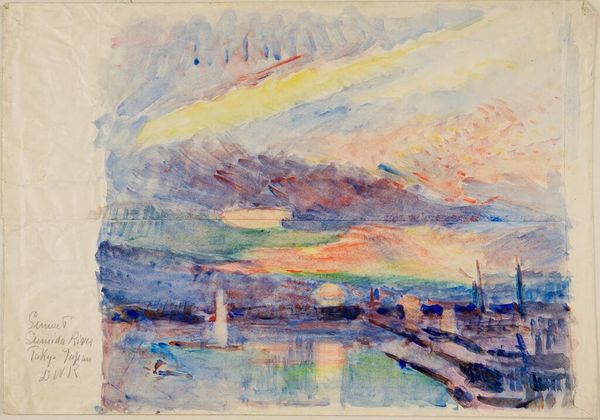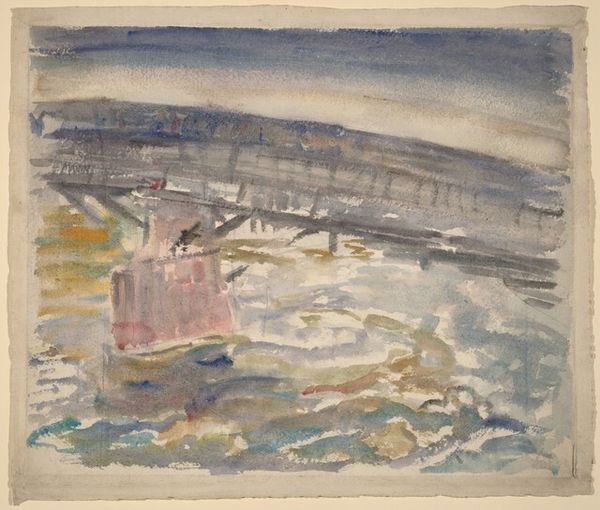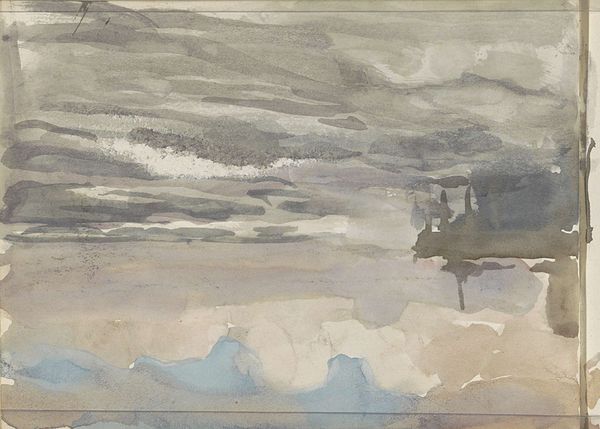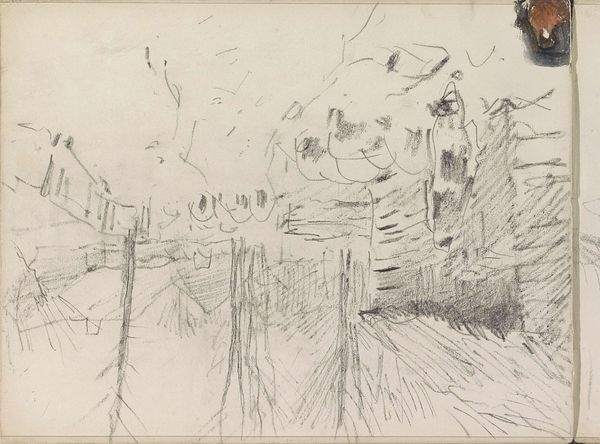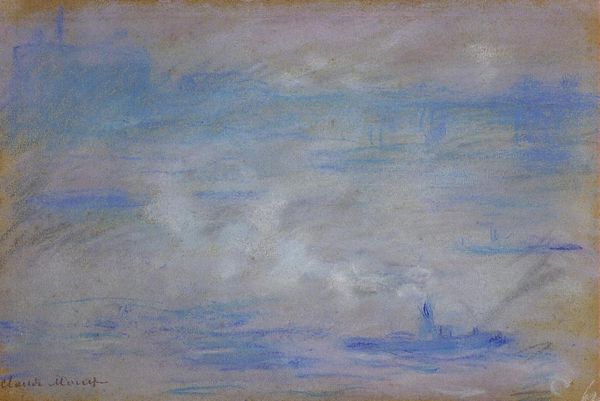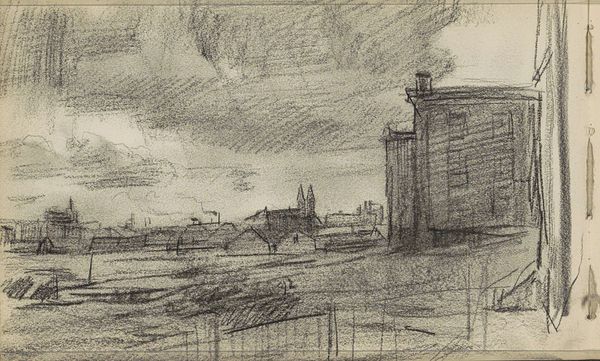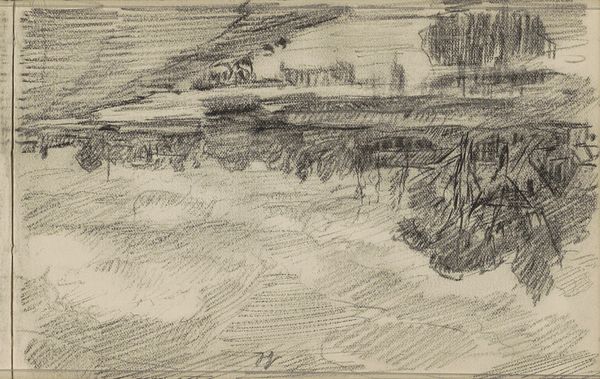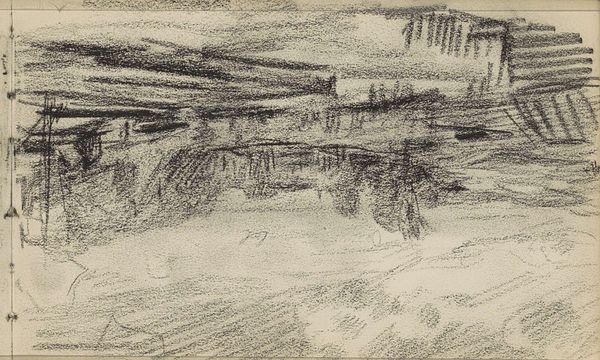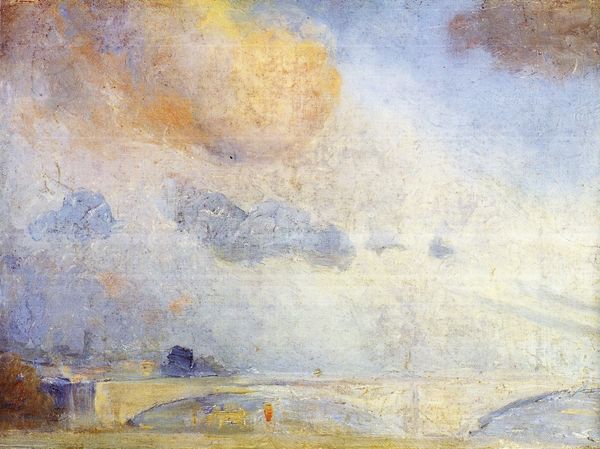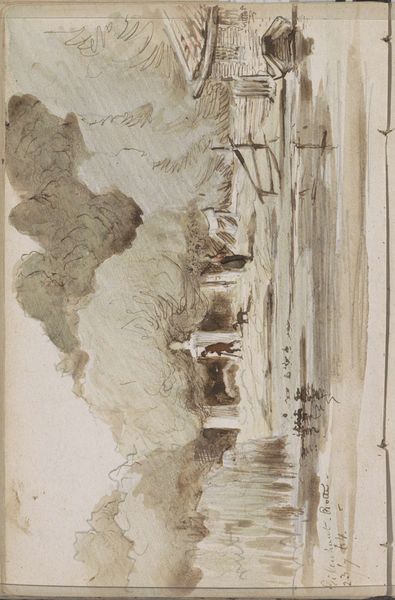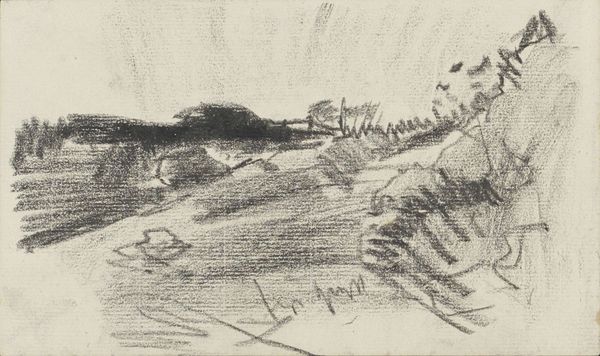
drawing, plein-air, watercolor
#
tree
#
drawing
#
impressionism
#
plein-air
#
landscape
#
impressionist landscape
#
possibly oil pastel
#
oil painting
#
watercolor
#
france
#
line
#
watercolor
#
realism
Copyright: Public domain
Editor: Here we have Eugène Boudin’s “Landscape with Sunset,” created in 1885 using watercolor. The muted colors give it a rather melancholic feel, like a memory fading at the edges. What strikes you most about this piece? Curator: Well, its seemingly effortless capture of light certainly stands out. But let's consider this work in relation to the rise of plein-air painting. Boudin was a key influence on Monet, urging him to paint outdoors. This piece speaks to the shifting relationship between the artist, nature, and the emerging art market. Editor: So, it’s not just a pretty picture of a sunset, it reflects broader cultural changes? Curator: Precisely. Think about the burgeoning middle class in France at this time, the increasing accessibility of art supplies, and the demand for landscapes that offered an escape from industrializing urban centers. Boudin was providing a slice of nature for an audience that craved it. The rapid brushstrokes, the focus on capturing ephemeral light—all this contributed to a democratized artistic experience. Editor: It's like he's selling not just a landscape but a feeling, an experience. Curator: Indeed. And what power dynamics are in play when this 'experience' gets presented in a Salon or sold through a dealer? Editor: That gives me a lot to consider. I guess I saw the surface first, the immediate aesthetic appeal. Curator: It's easy to do that. Looking closer, we also see the social forces and marketplace that shape what an artist chooses to represent and how. Editor: I'll definitely keep that in mind moving forward. Thank you! Curator: A fruitful discussion; I too learned more by analyzing his decisions in the context of their time.
Comments
No comments
Be the first to comment and join the conversation on the ultimate creative platform.
